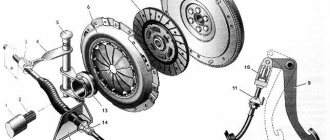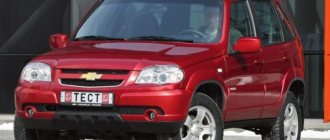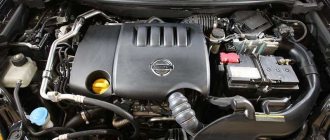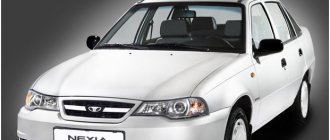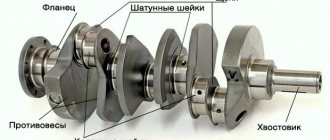How to brake without ABS
Braking is always a forced measure designed to quickly reduce speed in order to avoid a collision or to stop a vehicle. In winter, the need for braking increases, including emergency and emergency braking, since at this time of year there are many more obstacles and obstacles on the road. Braking on a slippery road is very dangerous, since the car suddenly changes from smooth movement to uncontrolled sliding due to partial or complete blocking of the wheels.
When braking sharply, the wheels lock and the driver loses control, which can lead to a serious accident. By the way, if you suddenly add traction, the wheels may even slip, which will also lead to an accident.
The most common mistake drivers make is that when an obstacle suddenly appears, they press the brake pedal with all their might, forgetting that under the wheels is not dry asphalt, but compacted snow or ice. As a result, the car begins to drift in an unexpected direction, it no longer obeys the steering wheel and pedals, and the driver panics.
There are two fundamentally different methods for safe braking in winter: braking in a car with and without ABS. When braking with ABS, you press the pedal vigorously: the system will do everything to prevent the car from skidding. Weak pressure on the brake may be interpreted incorrectly by the system and it will not engage. How to brake without ABS - you have to use intermittent or stepped braking.
We'll talk more about it later. And here we will say that intermittent braking is performed by a series of short pulses on the brake pedal, which simulate the operation of ABS. Step braking is the same, but with increasing force. The main thing is to prevent the wheels from locking: brake exactly until they stop rotating, and immediately release the pedal. At the last braking impulse, which brings the car to a stop, you need to disengage the clutch so as not to stall the engine and move the gearshift lever to the neutral position.
ABS – HELP OR HANDLE ON ICE
Equipping cars with driving assistance systems has led to the fact that many, especially inexperienced drivers, began to trust it too much, forgetting many aspects of safe driving. We should not forget that with the onset of frost, you should replace tires with studded versions - this significantly reduces braking even on slippery roads. In order to know how to brake correctly with ABS, you should become familiar with the principle of operation of this system, which is designed to prevent wheel locking when braking and loss of control over the vehicle.
When you try to brake sharply on a standard car without ABS, the wheels simply lock, which leads to a sharp decrease in controllability and the vehicle skidding. It is worth noting that the friction force between the blocked tire and the road surface will be quite weak, so stopping the car quickly is almost impossible on a slippery road. Braking, which is carried out without blocking, is more effective than sliding on an icy road surface. In addition, this prevents uncontrolled sliding and skidding of the car. The pros and cons of ABS are described in detail in the video:
To know how to brake with ABS with maximum efficiency, you need to understand the principle of operation of this system, which is quite simple. On each of the hubs of a car with ABS there are special protrusions similar to gear teeth. When the car moves, they move under inductive sensors, which transmit impulses to the car control system. There are several sensors, and when the wheel stops rotating during braking, the transmission of impulses stops, the bypass valves are activated and the braking force weakens. It is at this moment that the driver hears a characteristic crash. Thus, the ABS system prevents wheel locking, allowing the driver to control the process of driving the car.
How to brake with ABS
To evaluate how slippery the surface is and get the hang of how to brake with ABS , do a simple test. First, make sure there are no vehicles following you and there is enough space ahead. Then, accelerating slightly (about 20-30 km/h), sharply press the brake pedal several times. If your car is not equipped with an anti-lock braking system (ABS, also known as AB8), and the wheels are slippery, the car will skid, practically not obeying the steering wheel and slowing down inactively. If the car is equipped with ABS, then on a slippery surface the brake pedal will crackle and vibrate. This indicates that the wheels have a low coefficient of adhesion to the road surface. At the same low speed, you can sharply turn the steering wheel to the side and immediately return it to its original position. If the car follows the steering wheel, it means there is good grip on the road, but if it reacts late or doesn’t react at all, then there is ice on the road. No matter what happens, in any situation, our on-site technical assistance specialists on Moscow roads will come and provide the necessary assistance.
HOW TO BRAKING CORRECTLY IN A CAR EQUIPPED WITH ABS
Before dealing with the question of how to properly brake in winter on a front-wheel drive vehicle, you should remember the simple rules of “winter” behavior on the road, which are often neglected by modern drivers:
- maintain a distance that differs from the summer distance by a slightly greater distance;
- tires must correspond to the season - not necessarily studded, but continuing to operate the car on summer tires in winter is unacceptable;
- avoid sudden braking when maneuvering, especially when cornering;
- Do not press the brake pedal too hard when the car overcomes obstacles/uneven road surfaces.
The last point is especially relevant for cars with ABS. You should not naively believe that if the car is new and expensive, all the safety systems and driver assistance systems available in it will help maintain control in a critical situation when the driver himself does not show basic attention to the road situation. In addition, there are some features, in addition to those listed above, that will allow you to brake on ice with ABS more correctly. These include the following:
- you should not release the brake or even loosen the force on the pedal when a crackling sound appears, which only indicates that the ABS is working correctly;
- You should not press the brake too sharply - the force should be smooth and evenly increasing;
- no need to remove your foot from the brake pedal until the car comes to a complete stop, if necessary;
- While relying on ABS, you should not neglect other actions aimed at reducing speed/avoiding a collision.
Attention! The absolute effectiveness of ABS is sharply reduced on surfaces such as sand, ice, and pronounced unevenness - braking on them should be carried out taking into account the fact that the ABS may not work correctly.
How to brake correctly with ABS
It happens that even a car with a working ABS is not able to slow down effectively, although the driver presses the pedal hard, and the system makes its activity known by a characteristic clicking sound. The problem may be that the surface is too slippery and the weight of the car is too large to quickly absorb high speed. In this case, even before braking begins, it is worth moving a meter and a half to the side, getting off the rolled track. Perhaps there is snow or mud there, which in this case will be beneficial and allow the wheels to grip tightly to the road surface. From the next chapter you will learn how to properly park a car in winter: how to choose a parking place, the position of the handbrake when parking and leaving the parking lot.
Intermittent or stepped braking, when the braking force is unevenly distributed between the wheels, provokes the so-called yaw, that is, the car loses directional stability. To avoid this, it is necessary to make short steering movements in the intervals between braking impulses, in no case allowing the development of a whiplash movement of the rear of the car in the opposite direction. When, with experience, the driver learns to take into account the ABS signal - a crackling sound when pressing the brake pedal, and takes the right measures - he begins to understand well how to brake correctly with ABS
. And in one of the following chapters you will find out why you need to master emergency driving techniques.
ABS and classical mechanics?
When driving, the car's wheels are constantly in contact with the road surface with part of their area, which is called the contact patch. Thus, the wheels (and therefore the entire car) are constantly affected by the static friction force while it is moving. Since it is greater than the sliding friction force, it prevents the wheel from slipping. Therefore, it is logical to use the static friction force, and not the sliding friction force, to stop the car.
What happens when we press the brake pedal? The driving wheels of the car are blocked and stop rotating, and the sliding friction force begins to act on them, which, although less than the above-mentioned static friction force, is quite sufficient on roads with good, dry surfaces. Well, what if it rained, or there were frosts at night, or under the wheels of your car there is not asphalt, but a muddy primer? If you press the pedal sharply, you can easily send your car into a skid. It is to prevent this situation that the ABS system exists.
ABS is installed on most manufactured cars
How to brake correctly with ABS on mechanics
Try to use your service brakes less, especially when cornering. Use engine braking more often - driving without supplying fuel in one gear. In this case, you will completely eliminate wheel locking and loss of control, since even a short stop in wheel rotation during a turn can result in a U-turn or flying off the road surface.
This advice leads to the following: never brake on snow or ice with the clutch disengaged. By such actions you deprive the wheels of the power connection with the engine, and you deprive yourself of the opportunity to influence deceleration and acceleration.
When driving in a city where traffic is quite dense, brake carefully, paying attention to the situation behind you. Don't forget to check your rearview mirrors often. If your car is wearing studded tires, always remember that on clean asphalt the braking distance increases by 1.2-1.5 times compared to non-studded tires.
In front of traffic lights and pedestrian crossings, the surface is usually more slippery, since in such places it is polished by frequent braking of other cars. This must also be kept in mind when calculating braking distance.
On the highway, keep your distance from the leader. Again, take into account the possible difference in the tires of your cars: if the vehicle in front rides on studded wheels, then on ice its braking distance is shorter than yours if you don’t have studs. It is advisable to even look further ahead in order to see the third or fourth car from you and begin to gradually slow down already when their brake lights come on.
What is the secret of how ABS works?
It is important to know by what principle the ABS works, because it has a close connection with the control system, which means that, accordingly, with the level of safety of the driver and passenger. So, the main idea of the system is that when the driver presses the brake pedal, instant control occurs, and the braking force is redistributed to the wheels. Through this, the car is controllable in any conditions, and the effect of reducing speed is achieved. However, one cannot rely only on various additional systems because the driver must master his own car - the length of the braking distance and behavior in emergency situations. It is recommended to test the car's capabilities at specialized racing tracks in order to prevent sticky situations on the road in the future.
There are also some peculiarities of ABS operation. For example, when a driver decides to stop moving a car equipped with an ABS system, when pressing the brake pedal, a slight vibration is felt on the pedal, and an accompanying sound similar to a “ratchet” can be heard. Vibration and sound are a sign that the system is working. Meanwhile, the sensors read the speed indicators, and the control unit monitors the pressure inside the brake cylinders. Thus, it does not allow wheel locking, but slows down with quick jerks. Thanks to this, the car's speed drops without skidding, which allows you to control the vehicle until it stops. Even on slippery roads, with ABS, the driver only needs to keep control of the direction of the car. Such perfect and controlled braking is only possible thanks to the ABS system.
The following steps should be emphasized:
- Relieving pressure in the brake cylinder.
- Maintains continuous pressure in the cylinder.
- Increasing the pressure to the appropriate level in the brake cylinder itself.
It is important to know that the hydraulic unit in a vehicle is mounted in the brake system in a row directly after the main brake cylinder. As for the solenoid valve, it is a kind of tap that allows in and blocks the flow of liquid to the brake cylinders themselves.
The control and operating processes of the vehicle braking system are carried out in accordance with the information received by the ABS control unit from the speed sensors.
During the braking process, ABS deciphers information from the wheel speed sensors, due to which the vehicle speed drops evenly. If any wheel stops, a signal is instantly sent from the speed sensors to the control unit. Having received such a signal, the control module removes the blockage by activating the release valve, which blocks the entry of liquid into the wheel brake cylinder. At this moment, the pump returns the liquid to the accumulator. When the wheel speed increases to the permissible speed, the control unit will give the command to close the exhaust valve and open the intake valve. After this, the pump is started, which will pump pressure into the brake cylinder, as a result of which the wheel will continue to brake. These processes are carried out instantly and last until the vehicle finally stops.
The essence of the ABS operation being discussed represents the newest four-channel system, in which all wheels of the vehicle are monitored.
Some disadvantages of ABS
One of the biggest disadvantages of the anti-lock braking system is that its effectiveness depends on the quality and condition of the road surface. If the road surface is not good enough, the braking distance is much longer. This is due to the fact that from time to time the wheel loses contact or traction with the asphalt and stops rotating. ABS detects this kind of wheel stop as blocking and thus stops braking. At the moment the wheels engage the asphalt, the programmed command does not agree with what is needed in this case, and the system itself needs to be rebuilt again, which takes time and increases the braking distance. This effect can be minimized only by reducing the speed of the vehicle.
In the case of a non-uniform road surface, for example, snow - asphalt or ice - asphalt, if you encounter a wet or slippery section of the road, ABS evaluates the surface and adjusts the braking process to the given road. At the same time, when the wheels hit the asphalt, the ABS is rebuilt again, which again increases the length of the braking line.
On unpaved roads, the conventional braking system works much better and more reliably than the anti-lock braking system. After all, during normal braking, a blocked wheel pushes the ground, creating a small slide that prevents the vehicle from moving further. Thanks to this, the car stops very quickly.
Another flaw of the anti-lock braking system is that at low speeds, the system is completely disabled. In cases where the road is downhill and at the same time slippery, you need to remember that a reliable handbrake may be required for braking. Therefore, it must always be in working order.
There is no provision for regularly disabling the anti-lock braking system in cars. Sometimes drivers want to disable this system. To do this, you need to pull the plug out of the block. It is also necessary to take into account that in new cars the redistribution of inter-axle braking forces also depends on ABS. Therefore, by braking, the rear wheels are completely blocked.
It is important to note that the ABS system is an excellent addition to the car’s braking system, thanks to which you can control the car in the most difficult and unusual situations. Despite this, we should not forget that it is impossible to completely rely on the machine. The driver also needs to make great efforts to keep the situation under control.
How to drive in winter with ABS and ESP
As the proverb goes, the military is always preparing for the last war. Most of the authors of “valuable” tips on driving a car do exactly the same thing. Books become outdated, and edits in reprints fail to reflect the full essence of the changes that have occurred.
A few words about modern electronic assistants
Over the past ten years, there are almost no cars left on the roads without ABS, and all-wheel drive on most cars has become automatically connected and electronically controlled. ESP today is increasingly included in the basic package, and automatic transmission is gradually replacing “mechanics”. And active steering systems are slowly penetrating our lives - one Infiniti Q50 without a mechanical connection between the steering wheel and wheels is worth something...
Against the background of these changes, advice like “Pull in the clutch and turn the steering wheel in the direction of skidding” does not even look like an anachronism - they are simply not applicable in practice. As for the advice of sports driving gurus, again, they are only true for prepared cars, without “smart” electronics, with powerful engines and “correct” steering.
Some advice from “experienced” people has long lost its relevance and is close to becoming dangerous. The most popular option that appeared on cars was the anti-lock braking system - ABS. The essence of its work is to prevent wheel rotation from blocking, thereby reducing the braking distance on hard surfaces and maintaining controllability when braking.
In Europe and the USA, cars without it have not been produced for a long time in principle; in our country, the sale of cars without this system is still permitted by law, but in fact almost all new cars are equipped with it. Many perceive it as an annoying nuisance and sincerely believe that without it they would have stopped earlier and it would have been more convenient to drive the car. But in reality, a car with ABS disabled is actually an uncontrollable car. Since the late 90s, ABS has taken on the functions of a brake force distributor - a system that prevents the wheels of the rear axle from locking earlier than on the front, thereby maintaining the stability of the car when braking. Without it, even an experienced driver risks completely losing directional stability when braking and driving sideways into a ditch. The anti-lock braking system also takes care of maintaining vehicle stability when braking on uneven surfaces, for example, when one wheel is on the side of the road and the other on asphalt. The system simply releases the brakes on the right and left wheels differently and the car eventually drives straight. Previously, this problem was solved only by adjusting the suspensions, but not very effectively. Some people, of course, actually manage to cope with braking without ABS better than with it. On loose surfaces, anti-lock braking systems may indeed be less effective than braking with locked wheels or special deceleration techniques, but the driver cannot always use this advantage and at least leave the car on the desired trajectory.
In addition, electronics can adjust the braking force on each wheel individually, and I have never seen a car with four brake pedals. Unfortunately, there are also examples of truly poor systems performance. Everyone has heard about errors in the firmware of ABS units on Volkswagen cars, which Autoreview journalists identified during tests of the Volkswagen Tiguan and several other VW and Skoda models. The system was overly diligent in releasing the wheels on uneven surfaces and when braking in corners, as a result of which the car slowed down much less effectively than other cars with ABS. Moreover, manufacturers did not in all cases release updated unit firmware, and none of the car models recalled for forced replacement. But some new systems recognize loose coatings and change the operating algorithm to minimize braking distances. We can talk about the pros and cons of the system for a long time, but now the story is about which control techniques have changed with the advent of electronics in the brake drive.
You are allowed to brake, but be careful
One of the few tips that everyone remembers is: “Don’t brake when cornering.” On cars without ABS, the advice is absolutely correct. Racing driving schools, in general, agree with initial training instructors on this issue, but provide training in special braking techniques that still allow you to slow down on an arc.
And almost all drivers act correctly and in a racing manner, trying to complete the braking before the turn. It’s just that in a critical situation, when the speed is too high, an obstacle or something else suddenly appears, they don’t brake either, although with ABS they could quite safely use the brakes, thereby preventing an accident or reducing the severity of the consequences. After all, they often have the front wheels There is a reserve of grip and you can brake and turn at the same time, without the risk of complete loss of control. If you have a “fresh” car with ABS, brake, nothing bad will happen. The car will reduce speed, and a lower speed means better traction and more time for control inputs. But the advice “In an emergency, just brake to the floor” is already given by the traffic rules, there are no “go around” provisions there. And most drivers honestly brake, not trying to get around an obstacle. Here everything is a little less clear. When taxiing, braking distances inevitably increase, at least slightly. And due to errors in the operation of the anti-lock braking system, which were already mentioned above, the braking distance can almost double.
And if the accident could not be avoided, the kind traffic police inspector will be sure that if you had simply braked without any tricks, then everything would have been fine, but if you were steering, then you are at fault... But if the chances of avoiding the obstacle are great, and the consequences of the collision may be heavy anyway, it’s better to try. But in order to choose the right solution, it is better to test your car in advance on braking during “rearrangement” or look for tests on the Internet. And then suddenly your car has the “wrong” firmware, which will not allow you to slow down in principle...
What to do if you have a rhythmic skid?
Another dangerous situation is rhythmic skidding. It is especially unpleasant on a front-wheel drive car. To stabilize the trajectory when the rear wheels skid, as we all know, you need to add traction. But it is not always possible to correct a skid, and if you “twist” the steering wheel and are late with the correction, then the skid becomes rhythmic. The rear wobbles first in one direction, then in the other, the amplitude grows... The consequences of the car flying off the track here will be more severe than if the driver had simply left everything to chance from the very beginning. It is often important to maintain the controllability of the car and not get caught in the oncoming lane by a speeding truck. Unfortunately, the majority of drivers’ emergency response training is at a very low level, and their actions in such a situation are reminiscent of the famous joke about Caruso, which Rabinovich sang over the phone.
It seems like you need to turn the steering wheel in the direction of the skid and add traction, but the steering speed and the relevance of control actions are not at all. And, of course, almost everyone is sure that you cannot press the brakes and the car will immediately go into uncontrolled rotation. In this dangerous situation, it is worth remembering that electronic assistants work better than most drivers. Yes, yes, a person cannot squeeze five tons to replace seat belts, and press four brake pedals ten times per second to replace the ABS and ESP systems - you just have to come to terms with this. All the mighty human intelligence (in its existence , however, there are also doubts when you watch videos about road accidents) clearly loses in the simplest motor skills to simple electronics and pyrotechnics. Without electronics, the wheels will lock when braking, and the car will actually rotate, not responding to the rotation of the steering wheel, but often this is also not the worst development of the situation - the speed will drop. But if there is ABS, then the situation changes sharply to the opposite. Even if the angular speed of the car is high enough, when the system is activated, it will try to prevent the car from turning. All system operation algorithms are “tailored” to maintain stability during braking. And, of course, the car will slow down, so even if you fail to stay on the road, the consequences will not be so severe.
And the controllability of the car in such conditions is completely preserved - you can operate the steering wheel just as effectively. Of course, the rear axle is unloaded, but the difference in the adhesion weight of the front and rear axles is perfectly leveled by controlling the speed of rotation of the right and left front wheels. I do not advocate pressing the brake pedal all the way at the slightest sign of skidding - nevertheless, working with the steering wheel and traction perfectly helps to correct the skid, and experience will not be superfluous. But if swaying appears, then it would be better to forget about the advice of your grandfather-instructor and try to take advantage of the chance that technical progress gives. Remember: in any dubious situation, the ABS should not only prevent the wheels from locking, it simply must maintain the straight motion of the car. It will perform this function not only if the car was moving straight, but will also try to straighten the trajectory in the event of a skid, equalizing the speed of rotation of the wheels. And if the system has a steering position sensor, which is true for modern systems, it will try to help the steering with the brakes
What's the result?
Let's make a short conclusion: on modern cars with ABS, braking when turning and skidding is possible. But only if traditional methods of solving emergency situations do not help.
There are only three dangerous scenarios (braking in a turn, braking on a straight line and rhythmic skidding) and a significant discrepancy between the very cautious theory and the rich possibilities for correcting the situation in practice. And in our article we considered only one, albeit the most important, active safety system - ABS . On cars with ESP systems, all assistance is available without pressing the brake pedal, but in this case the system only cares about ensuring the stability of the car on the selected trajectory, and not about deceleration, but the intervention of the system does not require any action from the driver at all.
The further you go, the more the paths of sports driving schools without “assistants” and the methods of driving modern cars will diverge. And only a complete understanding of the processes occurring with the machine, the operation of its components and assemblies, and practice will provide you with a truly new level of safety on the road. Read modern publications and do not rely on the opinions of old authorities on such important issues. And stay with us. And besides, take the time and go to a large empty snow-covered area to “understand” your car. No instructors needed. Feel free to accelerate in the snow, brake to the floor, turn the steering wheel... Do everything to understand the car at the level of reflexes. After all, there will be no time to think in an emergency situation.
Basic techniques for braking on ice - Auto Moto Special
When starting to discuss the topic of braking in winter, the first thing to note is that practically the most important condition for proper braking during icy conditions is the driver’s choice of “winter” speed. Typically, drivers with sufficient driving experience, with the onset of winter, automatically switch to a more relaxed way of driving. This method consists not only of reducing the average speed, but also of increasing the distance from neighboring cars, as well as switching to a special vehicle control technique.
For safety reasons, braking in winter must follow clear rules
Drivers with little experience gradually gain experience by learning from their own mistakes and analyzing all the temporary shortcomings of their own driving style. That is, in order to learn to feel confident on an ice-covered road, you should constantly improve your own driving technique, regardless of your experience behind the wheel of a car.
Braking without ABS
If your car is not equipped with an automatic wheel locking system, and you yourself are a novice driver, you will need increased attention and the ability to “listen” to the behavior of your car. What should be noted here is the ability to distinguish the characteristic sound of wheels being locked when the brake pedal is pressed. This sound should serve as a signal to the driver that the control of the car is out of control, and the car will have difficulty stopping - similar to the principle of a children's sled rolling down a hill until some obstacle appears in its path.
In order not to bring the situation to an obstacle, when a characteristic sound occurs, you should release the brake pedal to unlock the wheels - then control of the steering will again pass to the driver, thanks to the force of inertia.
To ensure that such a dangerous situation does not recur in the future, the driver should practice a special technique called intermittent braking, which is achieved by frequently but briefly pressing the brake pedal.
In this case, braking on ice will be convenient because the car will slow down, but the wheels will not lock - this will allow the car not only to brake correctly, but also not to deviate from the chosen trajectory.
The combined method of braking in winter is no less common than intermittent and stepwise.
Attention - a common mistake!
In general, braking on ice using the “full” method is the main mistake of drivers. Any sudden movements - with the steering wheel or the brake and gas pedals - are generally categorically not recommended in icy conditions, when the coefficient of adhesion of the tire to the road is extremely low. When making sudden movements on a slippery road, the wheels inevitably block, which leads to skidding of the rear or front axles of the car. Therefore, as mentioned above, you need to brake intermittently or stepwise - then the car will be able to slow down even before the wheels lock and, thus, you can avoid skidding
If you have a fairly large area for braking, you can use the so-called combined method of braking in winter, which involves downshifting simultaneously with braking. When using this method, the main thing is not to knock the engine down - to do this, it is necessary to engage gears only in the corresponding speed range, so that excess traction directed at the drive wheels does not interfere with the stability of the car
Braking with ABS
The anti-lock braking system of a car, unfortunately, is not always perfect - especially its first variations. Owners of cars equipped with ABS should remember that the braking distance of their cars, under certain circumstances, can be even longer than on cars without an anti-lock braking system.
The computer "brain" of ABS is designed to read and analyze wheel brake impulses so that the system can balance the wheels if one of them begins to lock. Everything would be fine, but in slippery areas, the ABS “doesn’t understand” how to act - this is precisely what causes the excessive braking distance. Of course, ABS of recent years of production usually do not have such problems, and thanks to the operation of the system in an emergency situation, you can stop in time, and also “hold on” for some time on unlocked wheels in order to miss an obstacle.
Owners of cars with ABS should remember the length of the braking distance
To properly brake in winter on a car equipped with an anti-lock braking system, you should press the brake pedal all the way and depress the clutch. In this case, ABS will begin to brake on its own, but the wheels will not lock. This method of braking must be perfected at training sites in order to thoroughly study the behavior of your car during emergency braking on an ice rink.
Engine braking method
Engine braking in winter is one of the most useful preventative skills for a driver to avoid skidding on icy roads. To perform this type of braking, you must release the gas pedal while the clutch is engaged in a certain gear. In this case, the supply of combustible mixture to the engine will stop, but it will receive torque through the transmission. That is, the motor, consuming energy, will slow down the transmission and, as a result, brake the wheels. The front wheels will receive additional weight due to the force of inertia, and, accordingly, the stability of the vehicle as a whole will increase.

